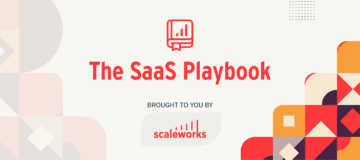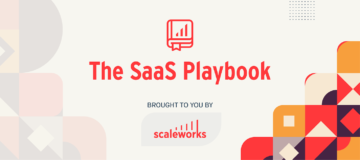Welcome back to The SaaS Playbook, a bi-weekly rundown of the top articles, tactics, and thought leadership in B2B SaaS. Not a subscriber yet?
🥤 One of the often misunderstood aspects of term sheets is liquidation preferences. These preferences give VCs the right to receive the funds they have invested before any common shareholders, such as founders, if a liquidation event occurs. That doesn’t just mean in the case of bankruptcy or winding down your company – any sort of transaction in which there is a change of control is considered a liquidation event. This read covers the differences between non-participating prefs (VCs get a multiple of the funds they invested OR a percentage of the stake they have in the company, assuming the shares convert to equity), participating prefs (VCs get both a multiple of their investment and a percentage of the investment made), and other key terms to know.
💭 “Write poorly and they notice the style; write well and they notice the idea”. That message on the importance of clear writing is taught to all Amazon employees, along with the idea to not write to impress others, but to express ideas. This list from Ex- AWS product manager, Danny Sheridan, covers 5 tips from Amazon’s Doc Bar Raisers (employees who participate in the final round of new hire interviews) on how to write clearly. One suggestion is to write in rhythm – varying word count and sentence length to hold the reader’s attention – in particular is an easy change to make that can drastically improve your writing today.
🥣 At Gainsight’s Pulse 2021 conference, SaaS advisor and consultant Dave Kellog took the stage to share net dollar retention (NDR) benchmarks and evolving trends in software metrics. Median NDR for private companies is up to 104% and the public SaaS median is 111% – both growing numbers due to NDR’s increasing impact on valuation (churn is a dead metric) and more companies adopting usage models which are ideal for growing contract value over time. He is also covers issues with the life time value (LTV) metric stemming from low or negative churn rates – for example, a 3 year old company with very little churn could show a 20 year LTV, when in reality there isn’t enough data to prove that. The full slides are available here.
🍲 We are going to stick with the topic of consumption based pricing (and food emojis) with this piece from our friends at Chargify, which shows how the pricing model isn’t just good for your NDR – it can actually be a driver of product adoption. First, it lets users try out your product with a lower cost upfront, so your conversion rates should go up given that the pricing model is more customer-friendly than inflexible flat rates. It also should reduce churn because your customers only pay for exactly what they need and seamlessly upgrade as they increase usage, units, or whatever variable you base your pricing on. This is much smoother than forcing customers to increase a maxed out subscription mid month (a useless point of friction).
Source: https://thesaasplaybook.substack.com/p/-evolving-trends-in-saas-metrics
- 2021
- advisor
- All
- Amazon
- articles
- AWS
- B2B
- Bankruptcy
- change
- Common
- Companies
- company
- Conference
- consultant
- consumption
- contract
- Conversion
- Customers
- data
- Dave
- dead
- Dollar
- driver
- employees
- equity
- Event
- First
- food
- founders
- full
- funds
- good
- Growing
- hire
- hold
- How
- How To
- HTTPS
- idea
- Impact
- Increase
- Interviews
- investment
- issues
- IT
- Key
- Leadership
- Liquidation
- List
- Metrics
- model
- numbers
- Other
- Others
- Pay
- pricing
- private
- Product
- public
- Rates
- Reader
- Reality
- reduce
- SaaS
- Share
- Shares
- So
- Software
- Stage
- stake
- subscription
- tactics
- thought leadership
- time
- tips
- top
- transaction
- Trends
- users
- Valuation
- value
- VCs
- WHO
- writer
- writing
- year






